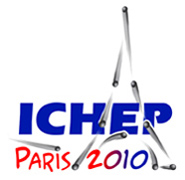Speaker
Pablo G Ortega
(University of Salamanca)
Description
In the last years, a number of exciting discoveries of new hadron states have challenged our description of the hadron spectroscopy. Among these so called XYZ states, one of the most mysterious states is the well established X(3872).
In Ref.[1] we performed a coupled channel calculation of the 1^++ ccbar sector including qqbar and DD* molecular configurations; in the framework of a constituent quark model which successfully describes the meson spectrum, in particular the ccbar 1^-- sector. The elusive X(3872) meson appears as a new state with a high probability for the DD* molecular component.
The branching (X(3872)-> pi+pi-pi0 J/psi)/(X(3872)-> pi+pi- J/psi)=1.0+/-0.4+/-0.3 measured by Belle [2] suggest an important isospin violation, while the branching between the radiative and the strong decays (X(3872)-> J/psi gamma)/(X(3872) -> pi+pi- J/psi) with values measured by Belle 0.14+/-0.05 [2] and by BaBar 0.33+/-0.12 [3] suggests a sizable ccbar component.
In this contribution we analyze the line shapes and the different branching ratios for the decay of the X(3872) measured by the Belle and BaBar Collaborations, finding a good agreement with the experimental data.
Besides the X(3872), the discovery of new states at the B-factories that don't fit in the conventional qqbar assignment motivates the study of such structures in other sectors. Using the same framework as in Ref. [1], we search new molecules in the hidden charm and charm strange sectors. In the hidden charm sector we only find the controversial 1^-- Y(4008) charmonium state as a D*D* molecule. The D_s1(2460) appears as a D^*K molecule in the charm strange sector.
We also explore the hidden bottom sector in the same framework. The reduction of the kinetic energy due to the mass of the b quark favors the creation of new clusters. Our constituent quark model allows to study all the sectors in an unified vision. One of expected new particles is the partner of the X(3872) meson, found as a B B*bar. Other possible molecular candidates are studied.
[1] P. G. Ortega, J. Segovia, D. R. Entem, F. Fernandez, Phys. Rev. D81, 054023 (2010)
[2] K. Abe et al. (Belle Collaboration), arXiV:hep-ex/0505037.
[3] B. Aubert et al. (BABAR Collaboration), Phys. Rev. Lett. 102, 132001 (2009).
Author
Francisco Fernandez
(University of Salamanca)
Co-authors
David R Entem
(University of Salamanca)
Pablo G Ortega
(University of Salamanca)
